'A time capsule': 156-year-old sunken ship found in pristine condition in Lake Michigan
A missing cargo ship was found largely intact after sinking in Lake Michigan over a century ago.
Maritime historians Brendon Baillod and Bob Jaeck located Trinidad about 270 feet below the surface just miles away from the Wisconsin coastline in July.
The pair designated the find one of Wisconsin’s most important shipwrecks because of how undamaged ship remained, unlike other wrecks discovered in the Great Lakes.
Trinidad still has dishes in its deck house, anchors, a wheel, bell and other deck gear. Not to mention, the crew's possessions and other artifacts.
Even the rigging, which in the Trinidad's case used wire instead of the usual rope that would have rotted away, survives, giving marine archaeologists a very rare chance to directly study how the 19th-century cargo ship was rigged.
"It's one of the most intact shipwrecks ever found in Wisconsin waters. It's a very significant find. It's not a famous ship, but there are very few ships like it in Wisconsin waters. … It's like a time capsule,” President of the Wisconsin Underwater Archeological Association Brendon Baillod said.
Here’s what to know about the unique find.
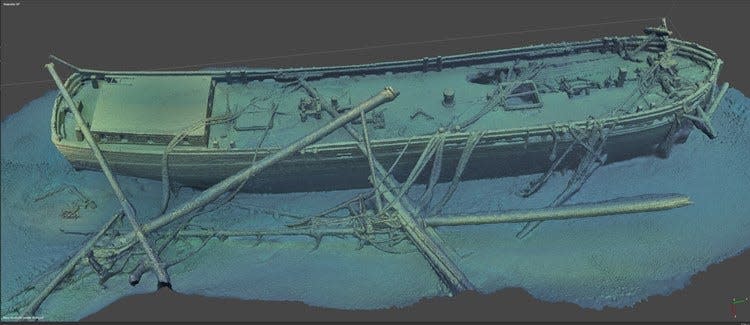
How was the Trinidad found?
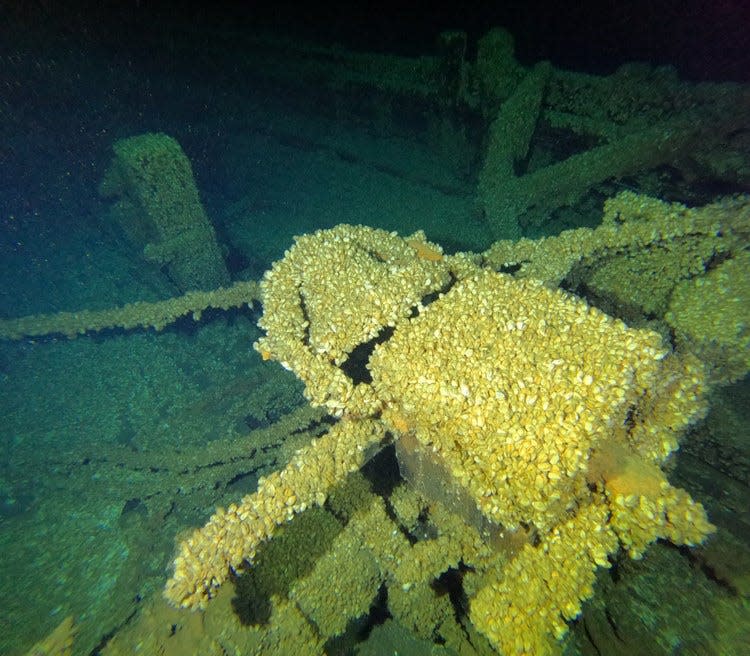
Baillod used historical documents to approximate the Trinidad’s location down to a 25-square-mile grid, about 10 miles from shore. Baillod and Jaeck then used sonar to search for Trinidad.
"This one ticked all the boxes for discovery," he said. "It was not very well-known, not far from a port, few people if any looked for her, and we had a 5-by-5-mile base where we figured it would be."
Baillod and Jaeck used a low-frequency sonar well below the surface of the water to create a three-dimensional map of the bottom of the lake, nearly ⅓-mile wide on each pass. When they first saw an image of the wreck, they almost missed it because it appeared as little more than a smudge.
But they turned back for another pass at the same spot at slower speed and were clearly able to see the shipwreck, almost exactly where she was reported to have sunk.
"When we found it, we were stunned," Baillod said.
What was Trinidad built for?
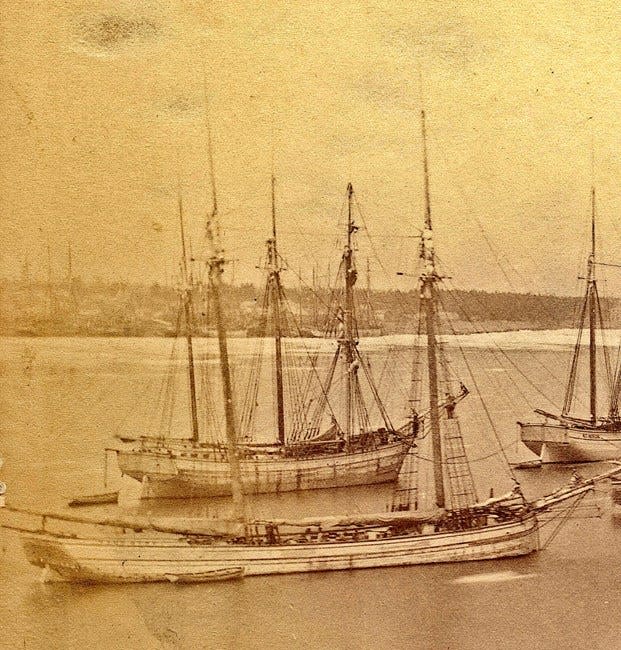
Trinidad, a 140-foot-long schooner was built by William Keefe in Grand Island, New York in 1867, according to Baillod’s research.
The ship’s primary purpose was to ship grain; she would carry coal from Oswego, New York, through the Great Lakes to ports in Milwaukee and Chicago then return to New York hauling grain from Wisconsin.
Despite the fact that Trinidad turned over a lot of profit for its owners, they didn’t maintain it very well. Within 10 years, Trinidad was suffering from decay and hull leaks.
The ship was no longer fit to haul grain by 1879. While carrying coal in May 1880, the ship struck a reef in Lake Superior that tore out 10 feet from her bottom, which was "hastily repaired."
Before sinking in May of 1881, Trinidad’s owners sent her on one last trip bound for Milwaukee with a load of coal. After surveying the extent of the damages, Captain John Higgins decided to retire the ship for the winter at Port Huron about halfway through the trip.
What happened the day the Trinidad sunk?
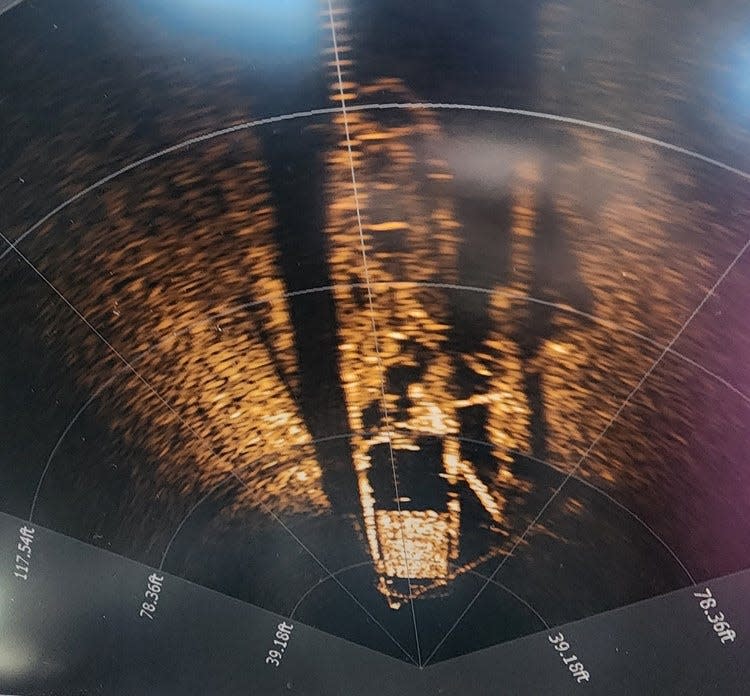
Captain Higgins and his crew began their journey from Port Huron, Michigan to Milwaukee in May of 1881.
After passing through the Sturgeon Bay canal May 10, the vessel began leaking more than usual, and even the extra pumps fitted to her could not prevent the water from continuing to rise in the hull.
At 4:45 a.m. May 11, the Trinidad suddenly lurched and began sinking rapidly. The crew had no time to gather their possessions or weather gear before boarding their small yawl boat, and the ship sank so quickly that a Newfoundland that served as her mascot was unable to escape.
The crew, all feeling the effects of the cold and the wet, rowed eight hours in the yawl through the waves of Lake Michigan before landing in Algoma at about 2 p.m. They later were taken by schooner to Chicago where Higgins reported the loss.
Higgins told reporters he believed the Trinidad sank because of hull damage from ice while the vessel was in the Straits of Mackinac several days prior, but Baillod wrote that her lack of maintenance played a critical role.
"A review of the vessel’s career suggests that she was little more than a floating coffin by the time of her final voyage. The insurance records suggest that Trinidad received little of the normal maintenance and was essentially sailed into the bottom of the lake,” Baillod wrote on the Shipwreck World site.
What happens next?
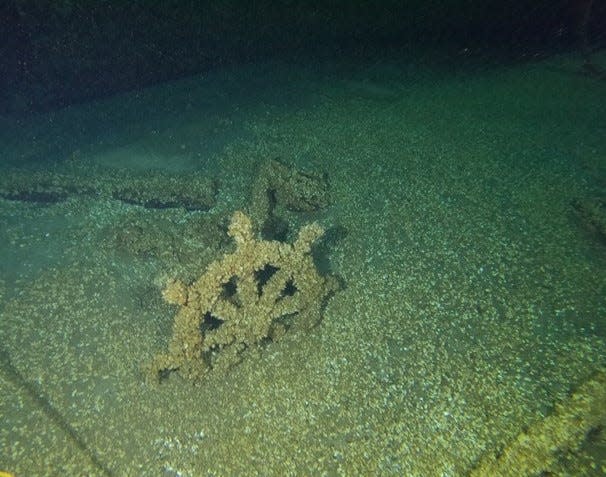
Baillod and Jaeck will work with the Wisconsin Historical Society to nominate the site to the National Register of Historic Places.
Baillod said the wreck lies just outside the borders of the Wisconsin Shipwreck Coast National Marine Sanctuary, so recognition as a historic place would bring greater visibility to it as an important part of the history of Algoma and the surrounding area.
Once the site is on the National Register and thoroughly documented, its location will be made public so technical divers can visit her without harming the fragile hull or its historical artifacts.
"We're pretty stoked. This is an important one,” Baillod said.
Anyone interested checking out the discovery more closely can take a flyover look at the model on YouTube or use a virtual reality headset to virtually walk on the Trinidad’s deck on Sketchfab's website.
This article originally appeared on Green Bay Press-Gazette: Sunken cargo ship Trinidad found in Lake Michigan in pristine state

